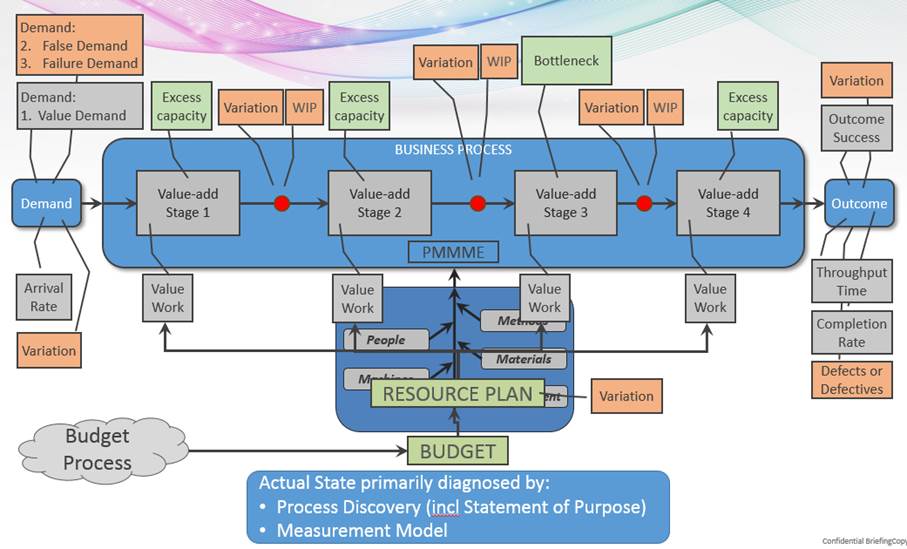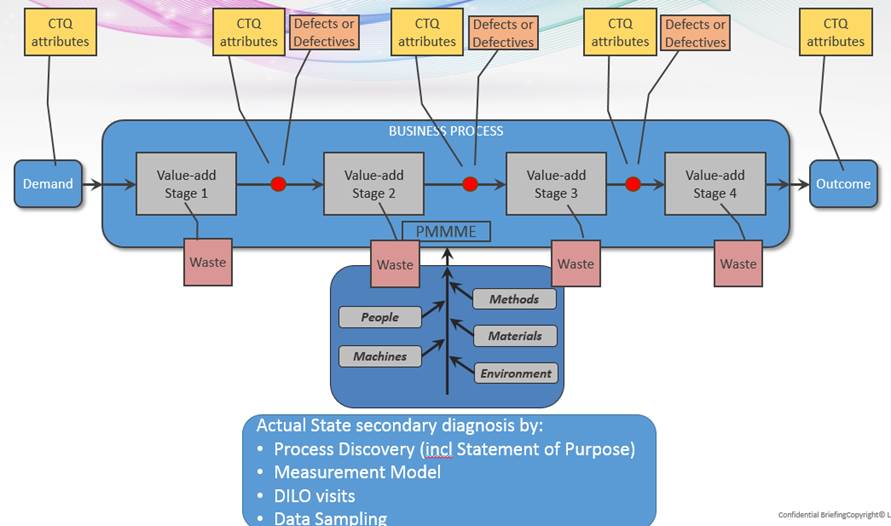Methods, Methods, and Methods… Part 2 of 2
04/09/2017


So in our previous blog, we mentioned that we come across challenges like – “We’re going to do ‘Demand Management’ using Method ‘X’”. Per previous blog, our usual response is to unpick this requirement statement to understand two concepts – Demand Management and Method X.
To recap on why we look at Demand Management, it is with an eye to understanding demand, and to characterise it against a well-defined purpose, and set in context in terms of flow towards an outcome, to identify waste and failure demand. There are methods for doing this, such as the Vanguard Method, Lean and variants of the Toyota Production System, for example. However, we noted this is only part of the story, since in certain process types (namely T2R – Trouble to Resolve) actual (or value) demand can also be worked on to improve the overall system. So any method must include the capability to understand sources of value demand, and how to remove or limit the impact of such sources.
Furthermore, some methods focus on identifying and redesigning bottlenecks – but anyone who has read “The Goal” by Eli Goldratt will know, every system, every process, will have a bottleneck, so there’s more to it than that. So the method must be able to identify and enable improvement action of constraints causing bottlenecks, or recognise you have to live with them.
That’s not all, some failure demand may be due to missing CTQ (critical to quality) attributes – so we must capture these in the method.
Finally (well finally for this blog anyway) a massive problem overlooked by many methods is understanding the impact of variation (in control and out of control – and there’s a difference requiring different improvement action). Even without a specific bottleneck, variation can cause WIP (Work In Progress or Backlogs) to build up causing apparent bottlenecks. If it is out of control variation, the apparent bottlenecks can move between stages over time, frustrating efforts focused on just one stage that simply add costs rather than solve the problem! Variation can cause failure demand, unwanted outcomes, under/over resourcing and more…..
So, any one of the well-recognised methods by itself is not fit for purpose in most cases – a blend of methods and techniques is required (just as you cannot do maths with only addition/subtraction (unless you’re a computer!), you need multiplication/division, use of powers/roots, trigonometry, calculus, and, and, and…. depending on the kind of problem you’re trying to solve).
Visualising and Understanding Demand (grey boxes represent what you design for, beige and green boxes are what you actually get that you might not want!) – 1

Visualising and Understanding Demand (grey boxes represent what you design for, orange is what is critical, beige and violet are what you actually get that you might not want!) – 2

So, what exactly is the blend of methods we actually use in our endeavours? Well they’re not in any management fad, on any bandwagon. Nor in any book – yet!
Categories & Tags:
Leave a comment on this post:
You might also like…
Preparing for assignments and exams?
Sorry! We know it seems a bit mean to mention the exams in January rather than looking forward to the break before it! However, we know many of you will be thinking about your forthcoming ...
Screening for FTSE 100 companies on Bloomberg
So you’re researching an index and need some data on its constituent companies? Bloomberg’s Equity Screening tool makes light work of this, not just for the FTSE, but for indices, exchanges and sectors worldwide. Type EQS ...
Accelerating my future: How Cranfield put me on the fast track to automotive safety innovation
Hello! I’m Michaela Kaiser, and I’m thrilled to share my journey studying abroad. I’m from Calgary, Canada, and I recently graduated from Cranfield’s MSc Automotive Engineering course. My path to Cranfield ...
From Myanmar to Cranfield: My path to Renewable Energy
As someone who is passionate about sustainability, my career goal is to build a path in the renewable energy sector. My aspirations comes from the benefits of developing sustainable energy sources and ensuring energy ...
From lifelong dream to circular economy leader: Q&A with Himesha Randeni on the Environmental Management for Business MSc
What does it take to turn a lifelong passion for the planet into a fulfilling and impactful career? For Himesha Randeni, the answer was the Environmental Management for Business MSc at ...
Library services over the Christmas period
Kings Norton Library will be open 24/7 throughout the holiday period as a study space. Library staff will work until 6pm on Friday 19 December and will resume their normal working hours from 9am on ...






